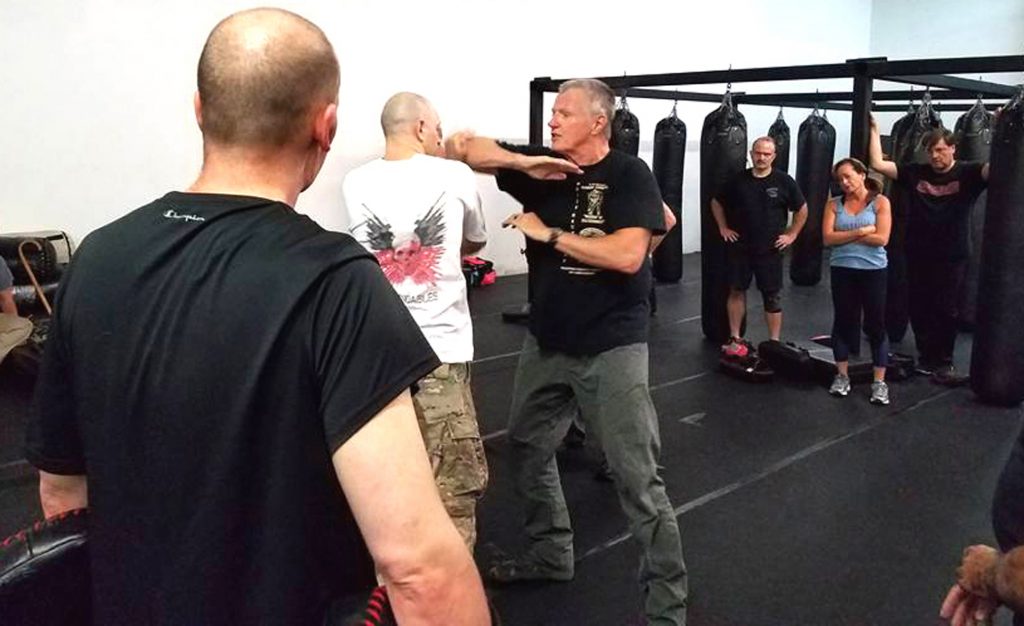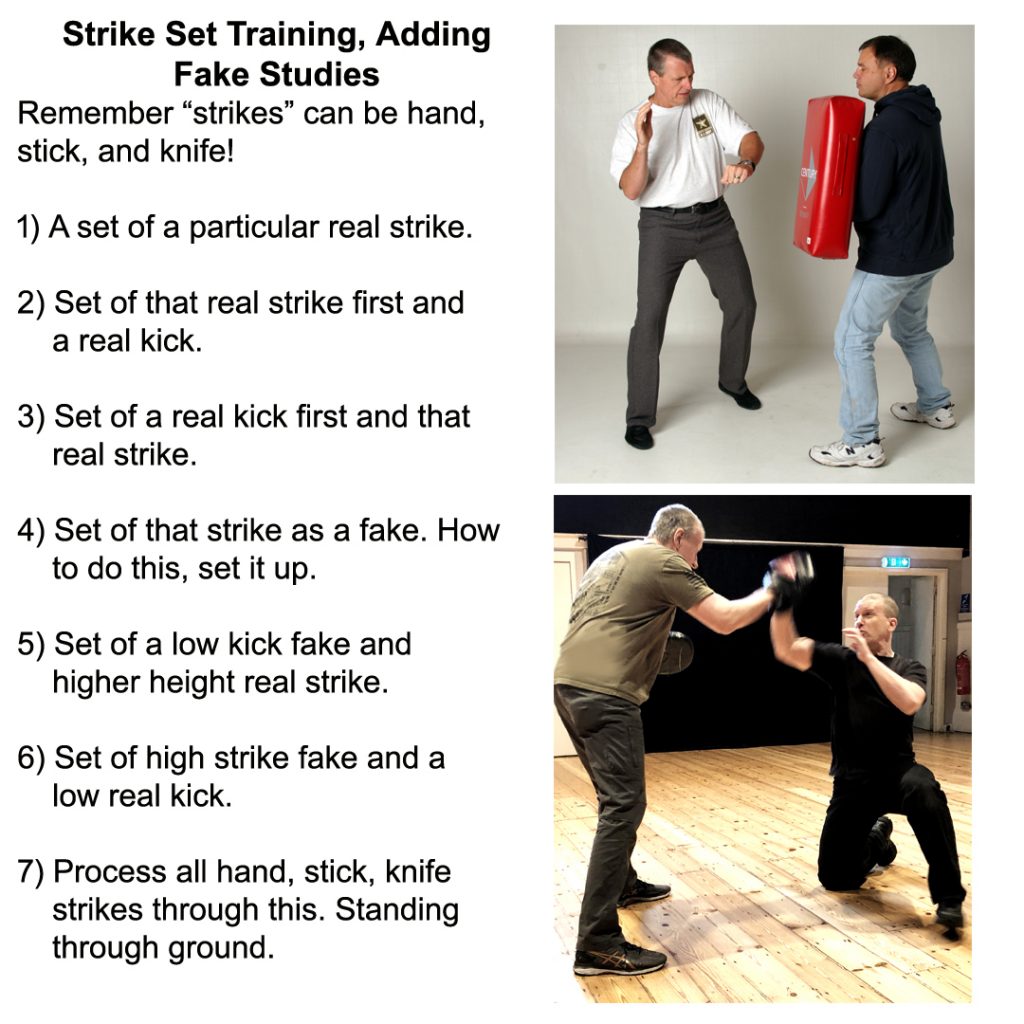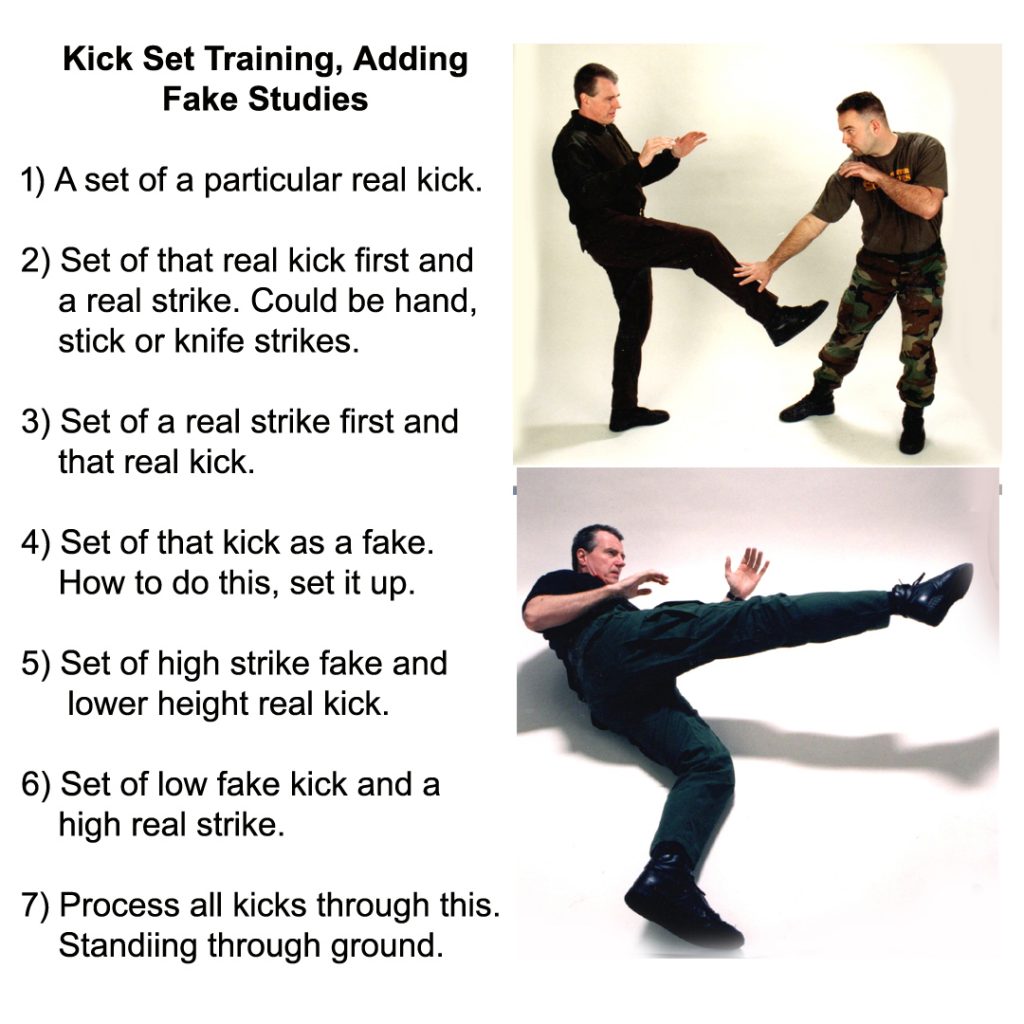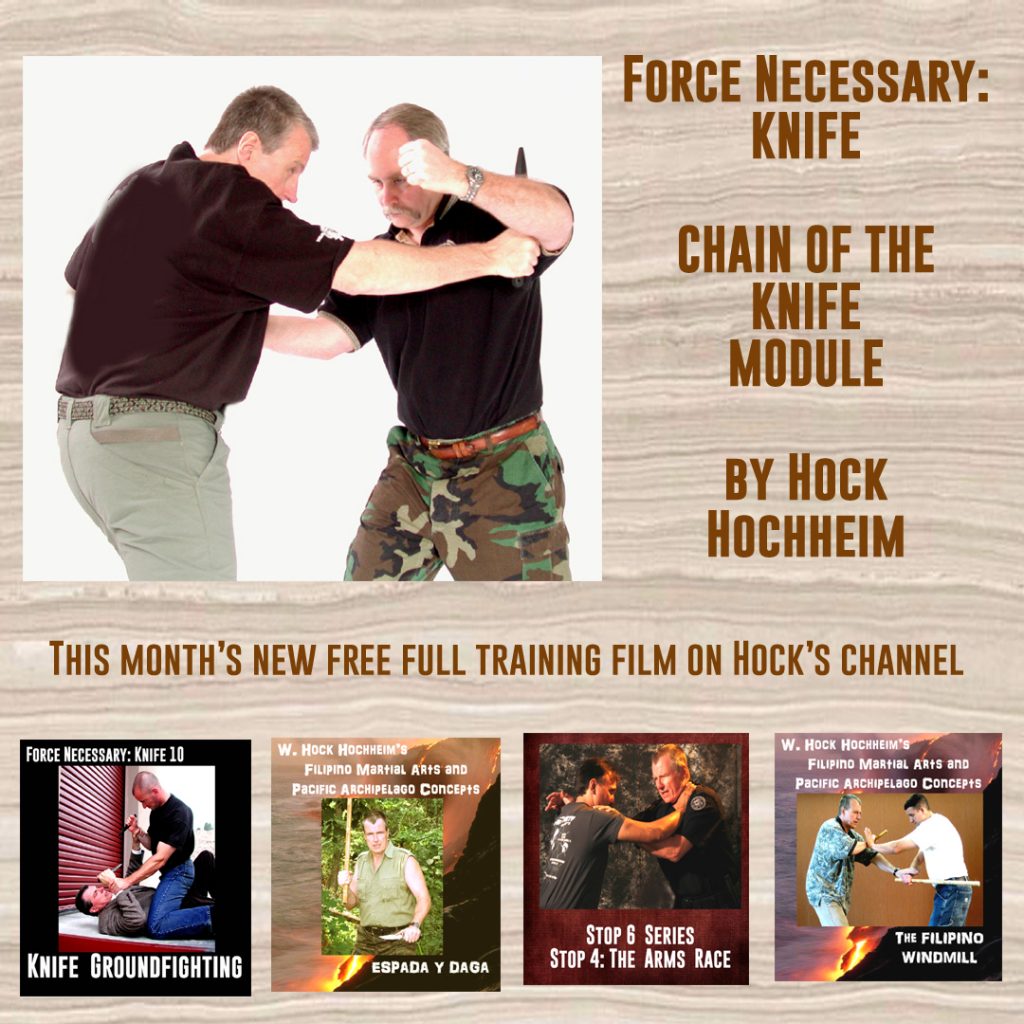A string! One great fake that opens a hole, then one stunning blow, then a tree-step combination…for starters. 5 parts of the string. 1 plus 1, plus 3.
What is string theory in simple “math” terms? Professor Google says: “Instead of treating subatomic particles as the fundamental building blocks of matter, string theory says that everything is made of unbelievably tiny strings, whose vibrations produce effects…” We here are not galactic physicists. We are knuckle draggers, trying to survive crime and war. Maybe win some trophies is the end game for some? I nickname small practice sets – “string theories.” Parts strung together. They are combat scenario preps, and we all do them but I would like here to interject the fake in as starters and some scientific ways to train them.
Tiny strings. The late, great Remy Presas said so many l times, “All you need you know, is one good fake.” He was speaking of a theory, a battle plan idea. Because we all know “all you need” in martial life is a whole lot more. Call the fake a “set-up” or whatever you please. The concept, this strategy is in all combat sports, and in many non-combat sports. For example in boxing – ” A mock blow or attack on or toward one part in order to distract attention from the point one really intends to attack. “The boxer made a feint with his right, then followed with a left hook.”

But a fake and follow-up string is especially important for self-defenders, a real priority to emphasize since they are not in the sports “duel,” the sports “spar,” the sports “grind” of controlled sports for as long as sports people are.
Think about it, a good fake is important. Good fakes…open things up. “How ‘sporty’ is your fake?” Trained fighters might see them coming and be susceptible to the real delivery steps. But, the ignorant untrained eye won’t see them coming. And I must ask, “How fast is your fake?” If your opponent is slow, a fast fake won’t get the reaction you seek, that opening . You must fake slower.
Brace yourself, fakes or no fakes, to be really thorough, first off you have to learn and improve these “first-line” physical events.
- Understanding common stand-off problems and ambushes. (Remember fakes are like min-ambushes.) Understand common reactions to strikes, kicks and grabs.
- All basic strikes.
- All basic kicks.
- All basic first grabs that lead to takedowns and ground captures.
- All basic body movements, footworks and maneuvers.
- How to fake strikes, kicks and grabs.
- Appropriate follow-up combinations to finish, or at least, to start off the finishing.
Yikes, that’s a lot of stuff! Folks can’t all be super experts in all these areas. Folks can’t all be martial full-timers, yet he path of study leads through this long way. Certainly, an expert and a serious instructor must know these things, but people with busy “lives,” all of which are 99.5% part timers, (almost all normal people with jobs, families, etc.) not full timers. But they can be taught these 3, 4, 5-part strings of combatives-self-defense early on which can be helpful. A breakdown…
1-The confrontation. The who, what, where, when, how and why a crime, a battle, or a fight started. Study the intelligence info of fights, crime and war. What are the opening ways of fights, war and crime? Why did you go there? Why are staying there. This essay is not about these “stay alert” topics – which would be a whole book but must at very least be mentioned here as number 1.
2-All basic strikes. Includes hand, stick, knife! The strike alone, in an already open path, needs no fake. But opponent reflex matters. Happens. What naturally, statistically pops open when the enemy ducks, blocks or dodges your incoming strike? In training, you can also turn a whole series in your hand strike training into a 2-step practice, even with every kick. Then a whole series on reverse, as in fake kick and go to hands. Two steps in the string right there that must be formalized as a set of practice.
3-All basic kicks. The kick alone, in an already open path, needs no fake. But opponent reflex matters. Happens. What naturally, statistically pops open when the enemy ducks, blocks or dodges an incoming kick? In kicking, a very common tactic is to hand-fake high then kick low. In training, you can turn a whole series in your kicking training into this 2-step practice, making a higher hand fake part of every kick. Then a whole series on reverse. Fake kick and hand strike. Two steps of the string right there, that must be formalized as a set of practice.
4-All basic grabs. In takedowns-throws, what are the first, basic grabs on the body that set up one up. What needs to be open for such grabs? What strikes. kicks and fake grabs open the takedown throw-grab you are hoping for? In ground captures what are the first, basic grabs on the body that set up one up. What needs to be open for the grabs? What strikes and fake grabs open the grab you are hoping for? Can’t strike in your sport? Fake grabs then. What moves can set up your selected grab? (I have a whole other long essay on grabs and fake grabs and set-up grabs.)
5- Body movements, footworks and maneuvers. Where do we need to be to fake, and be in each part of the string to best execute? Standing or ground?
6-Combinations finishers. I myself believe in 2 or 3 step combinations. At least as a foundational, study method. It might take 5 or 6 things to finish a stunned opponent, in which case, I would like to package them in as yet another 3-part combination. That is just my training strategy. Long steps, 4 or more ideas in the string don’t seem to be accomplished as planned. The opponent moves, blocks, falls, etc. changing the range and breaking the long dance.
Hand fighting, stick fighting, knife fighting, gun fighting. Sports. Arts. The art of deception. String things along for training. String Theory.
One hand example?
- 1 High hook fake. Hopefully the enemy raises his arm to stop it.
- 2 His arm now raised, Low hook to liver.
- 3 He scrunches. A three Quick combination. Like… a) Higher hook, b) uppercut as head might descend from the liver shot,c) round kick.
- 4 Then whatever else might be needed. Another 3 set?
What series should you build against knife attacks, you armed or not armed? Sticks? Versus weapon quickdraws? I teach these hand, stick, knife (and gun concerning draw points) string lists, in an inspiration that eventually customize your own.
Yes, if you want to you turn these 5-part strings into katas. Yes. Many do. Go ahead. Katas and visualization-theory are not near the top of my list. I’d rather use and suggest gear, mook jong dummies, heavy bags, and of course the best – partners, but whatever. Doing something is better than nothing.
In sports you are filmed, and the opponents watch your favorite strings to prep. And,-or, you watch their favorite strings on films. In crime and war? Maybe not so much is available, but some things can be gleaned.
String Theory in fighting, Not too complicated! As the Rolling Stones said, “She was practiced at the art of deception. Well, I could tell by her blood-stained hands. You can’t always get what you want, But if you try sometimes well, you might find, you get what you need.”
Check out Hock free full one hour training films on his TV channel. Click here



